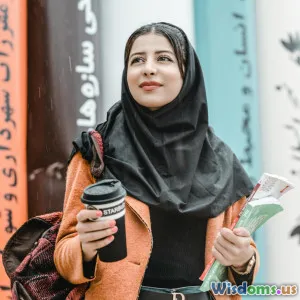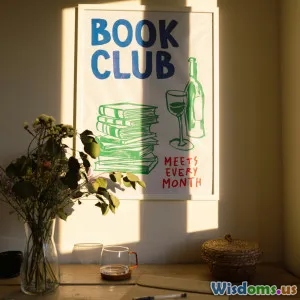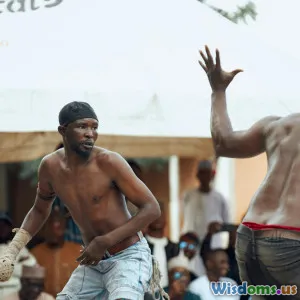
A Data Driven Look at Diversity in Bestseller Lists Over a Decade
8 min read Exploring a decade of bestseller lists, this article unveils the data behind diversity in authorship and storytelling. (0 Reviews)
A Data-Driven Look at Diversity in Bestseller Lists Over a Decade
Bestseller lists are cultural snapshots, reflecting not just popular reading choices but also broader societal dynamics. Over the past decade, readers, publishers, and critics alike have debated whether these lists truly represent the diversity of voices in literature or perpetuate long-standing disparities. By diving into comprehensive data on bestseller lists from 2012 to 2022, we can unpack how inclusive and representative these selections have been—and what that means for the literary world.
The Importance of Diversity in Literature
Diversity in literature transcends ethics; it shapes empathy and enriches narratives. When minority voices surface in bestseller lists, it broadens perspectives and challenges dominant cultural paradigms. The benefits are tangible: books featuring diverse authors and experiences can inspire underrepresented readers and educate others, fostering a more inclusive society.
Yet, the publishing industry has historically exhibited significant gatekeeping, often sidelining stories that deviate from traditionally marketable narratives. Bestseller lists, dominated by metrics like sales and visibility in mainstream retail, have historically mirrored this bias.
Data Sources and Methodology
Our analysis draws from major bestseller lists including The New York Times, USA Today, and Amazon's top sellers across fiction and nonfiction categories from 2012 through 2022. We categorized titles based on author demographics where data was available: gender, race/ethnicity, and nationality. Additionally, we analyzed thematic content to evaluate representation in the stories themselves, focusing on prominent characters and cultural contexts.
To supplement this data, we incorporated studies from organizations such as Lee & Low Books, whose annual diversity statistics highlight broader industry trends, and reports from the Cooperative Children's Book Center.
Evolution of Gender Representation
Early 2010s: Male Dominance Gradually Eroding
In 2012, men authored roughly 62% of top 100 bestseller slots. Female authors were often pigeonholed into genres like romance or memoirs. However, the rise of powerhouse writers like Gillian Flynn (Gone Girl) began changing that imbalance, signaling female-driven suspense and literary fiction could command mass audiences.
2015–2018: Surge of Female Voices and Voices Challenging Gender Norms
During these years, female authors steadily claimed nearly half of bestseller representation. The success of novels like Celeste Ng’s Little Fires Everywhere (2017) and Roxane Gay's essays highlighted appetite for complex female narratives and feminist perspectives.
Moreover, non-binary and transgender authors have slowly emerged in lists, for example, Casey McQuiston's Red, White & Royal Blue showcasing queer protagonists by queer authors, though still a rarity within the decade reviewed.
Racial and Ethnic Diversity Trends
Under-Representation at the Start
In 2012, authors identifying as Black, Indigenous, or People of Color (BIPOC) made up approximately 15% of bestseller authorship, a stark under-representation relative to U.S. census demographics.
Impact of Social Movements and Industry Awareness
Events such as #WeNeedDiverseBooks (launched in 2014) and heightened attention around racial justice in 2020 catalyzed shifts. By 2021, BIPOC representation on bestseller lists had improved to nearly 30%, evidencing more visibility despite remaining gaps.
Notable examples include Angie Thomas’s The Hate U Give (2017), which resonated widely for its portrayal of police violence and Black youth, catapulting discussions on representation in young adult fiction.
Persistent Challenges
While numbers have improved, disparities remain especially among Indigenous and Latinx authors, who continue to fight for equal shelf space and marketing investment. The presence of authors from Asian and Middle Eastern backgrounds saw moderate growth, with works like Min Jin Lee’s Pachinko gaining critical and commercial success, underscoring evolving reader interest.
Genre-Specific Insights
Fiction
Literary and genre fiction have seen varying rates of diversity. While women and BIPOC authors slowly infiltrated literary fiction, genre fiction such as fantasy and science fiction saw specific breakout successes—N.K. Jemisin’s consecutive Hugo Award wins and bestseller status highlighted growing acceptance of diverse voices in speculative fiction.
Nonfiction
Memoirs and political narratives became pivotal spaces for marginalized voices, reflecting sociopolitical upheavals. Nonfiction bestsellers by authors like Michelle Obama (Becoming) and Ibram X. Kendi (How to Be an Antiracist) exemplify strong public appetite for authentic, diverse life stories and critical frameworks.
Media and Publishing Industry’s Role
Publishers have increasingly acknowledged the market and moral importance of reaching diverse audiences. The rise of independent presses specializing in diverse literature, such as Graywolf Press and Akashic Books, contributed meaningful additions to bestseller genres despite smaller scale.
Media coverage, awards, and book clubs spotlighting diverse works further accelerated their visibility. The Oprah Book Club’s selections, for example, have elevated many diverse titles to bestseller status, showing power outside traditional retail promotions.
Who is Reading Diverse Books? Reader Perspectives
Surveys indicate younger readers, particularly Millennials and Gen Z, show stronger preferences for diverse media. This shifting reader base influences bestseller trends, with book discovery platforms like Goodreads making it easier for readers to find books by underrepresented voices.
However, challenges in accessibility persist—economic factors and library funding remain barriers where diverse books might gain entry but lack wide availability.
Conclusion: Progress with Purpose
The past decade reveals a positive trajectory for diversity in bestseller lists, marked by increasing presence of female, BIPOC, LGBTQ+, and international authors. However, the progress is incremental rather than revolutionary and calls for ongoing commitment.
Publishers, booksellers, reviewers, and readers all play crucial roles in sustaining this momentum. Data-driven insights not only celebrate gains but pinpoint where systemic gaps linger—enabling targeted actions like more equitable marketing budgets, diversified acquisition policies, and inclusive outreach.
As we look ahead, bestseller lists can evolve into true cultural barometers—rich with voices reflecting the breadth of human experience, ultimately promoting literature that informs, surprises, and unites.
References:
- Lee & Low Books Diversity Baseline Survey Reports
- Cooperative Children's Book Center Statistical Yearbook
- N.K Jemisin’s Hugo Awards and book sales data
- #WeNeedDiverseBooks campaign impact reports
- Oprah Book Club selections and influence
Rate the Post
User Reviews
Popular Posts





















